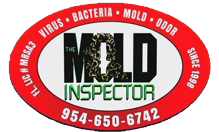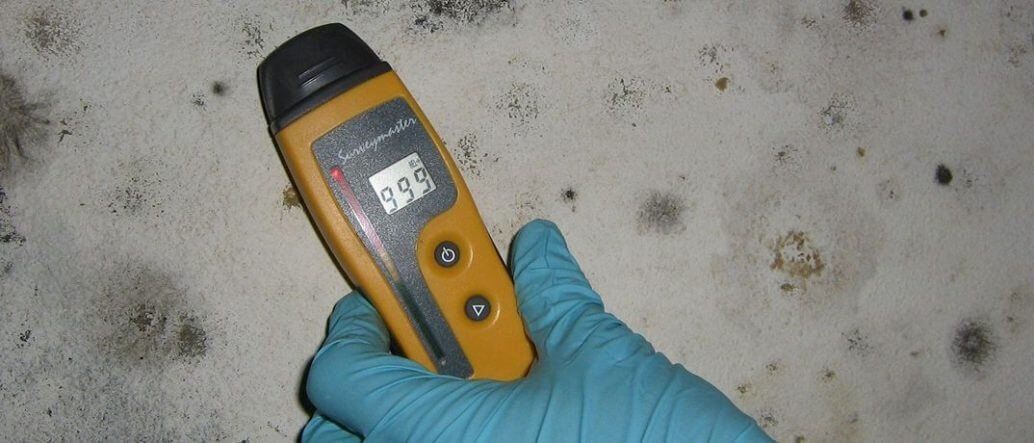Can Mold Cause Health Issues?
Contact Southeast Florida’s
Most Experienced Mold Assessor

We will get back to you as soon as possible.
Please try again later.
Can Mold Cause Health Issues?
Contact Southeast Florida’s
Most Experienced Mold Assessor

We will get back to you as soon as possible.
Please try again later.
Mold and Health Problems
Mold and moisture in your home or office may be responsible for your health problems. Many research studies have documented the link between health problems related to indoor mold and moisture.
If you believe that you or a family member or friend may have mold related health problems, don’t risk your health. Call or Text Howard Newmark, CIEC, AIEH, MRSA3, Southeast Florida’s first licensed Mold Assessor today at (954) 650-6742
“Sufficient epidemiological evidence is available from studies conducted in different countries and under different climatic conditions to show that the occupants of damp or mouldy buildings, both houses and public buildings, are at increased risk of respiratory symptoms, respiratory infections and exacerbation of asthma. Some evidence suggests increased risks of allergic rhinitis and asthma.” 2009 World Health Organization
Waiting is not worth risking your health and Howard is available to help you now.
Mold In Homes & Buildings
Mold is very common in buildings and homes. Mold will grow in places with a lot of moisture, such as around leaks in roofs, windows, or pipes, or where there has been recent flooding. Mold grows well on paper products, cardboard, ceiling tiles, in ductwork as well as on wood products. Mold can also grow in dust, paints, wallpaper, insulation, drywall, carpet, fabric, and upholstery.
The most common indoor molds are Cladosporium, Penicillium, and Aspergillus.
Hints There Could Be Mold
Common sources of mold growth in an indoor space include:
- A musty, earthy smell
- Staining on ceiling tiles
- Bubbling paint
- Peeling wallpaper
- Soft walls
- History of leaks or flooding
The most common sources of mold growth in an indoor space include:
High Indoor Relative Humidity
Excessively moist air can contribute to indoor mold growth. Air conditioning systems, condensation, and poor ventilation often contribute to indoor mold growth.
Poorly sealed windows, gaps in walls, improper flashing
Window seals, roofing systems, doors, windows, and walls should be monitored and maintained in an effort to prevent exterior water intrusion.
Plumbing Failures
Common water sources include plumbing features in or near kitchens, bathrooms, ice makers, wet bars, wall cavities, in or beneath concrete slabs.
Roof leaks
All leaks need to be repaired as quickly as possible. It only takes 24-48 hours for mold to begin to grow from a water source.
Air conditioning
Monitor and maintain your air conditioning (HVAC) systems regularly as part of your proactive effort to minimize unwanted mold or mal-odors in your home or business.
Southeast Florida’s first licensed Mold Assessor. Approved by The State of Florida as a DBPR Mold Related Services course author & instructor.
Howard uses an objective and scientific approach to inspections. Howard does not perform remediation, so there is never a conflict-of-interest.
Our testing services will determine the type of mold in your property and how much of it you may be breathing.
According to the USEPA; Molds have the ability to cause health problems. If you are experiencing a building related illness (BRI) don’t wait, call an experienced professional today.
Howard Newmark, CIEC, AIEH, MRSA3 has extensive experience and qualifications in Indoor Air Quality, and Mold Inspection & Testing that will provide a powerful influence on the result of your case.
Do you have a mold issue?
Is your property is making you sick?
Do you need a professional?
Speak to Howard today
Southeast Florida’s first licensed Mold Assessor. Approved by The State of Florida as a DBPR Mold Related Services course author & instructor.
Howard uses an objective and scientific approach to inspections. Howard does not perform remediation, so there is never a conflict-of-interest.
Our testing services will determine the type of mold in your property and how much of it you are breathing
According to the USEPA; Molds have the ability to cause health problems. If you are experiencing a building related illness (BRI) don’t wait, call an experienced professional today.
Howard Newmark, CIEC, AIEH, MRSA3 has extensive experience and qualifications in Indoor Air Quality, and Mold Inspection & Testing that will provide a powerful influence on the result of your case.
Do you have a mold issue?
Is your property is making you sick?
Do you need a professional?
Speak to Howard today
Signs of Poor Indoor Air Quality
Are you experiencing any of the following symptoms consistently while at your home or office? If so, there may be an issue with your indoor air quality. Call The Mold Inspector to schedule a property inspection today.
- Dryness and irritation of the eyes, nose, throat, or skin
- Headaches
- Fatigue
- Shortness of breath
- Hypersensitivity / Allergies
- Sinus Congestion
- Coughing and Sneezing
- Dizziness
Monday - Friday: 8:00am - 7:00pm
Sunday: Closed
Saturday: 10:00am - 2:00pm
Monday - Friday: 8:00am - 7:00pm
Sunday: Closed
Saturday: 10:00am - 2:00pm
Monday - Friday: 8:00am - 7:00pm
Sunday: Closed
Saturday: 10:00am - 2:00pm







